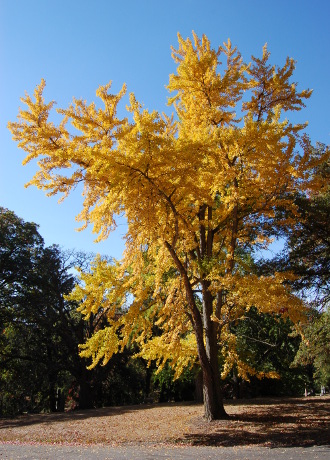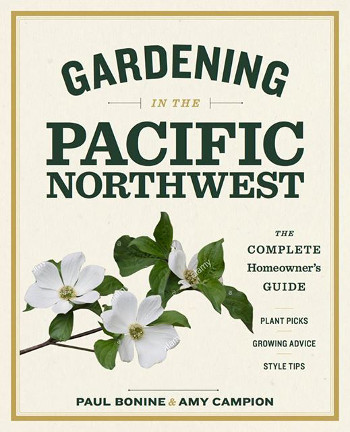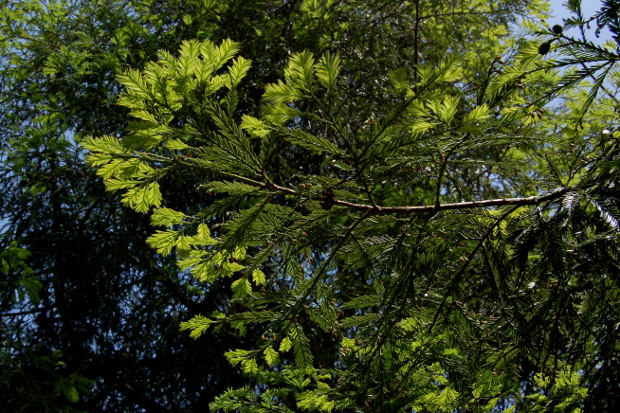 Is there anything more satisfying than golden ginkgo leaves backed by blue autumn skies?
Is there anything more satisfying than golden ginkgo leaves backed by blue autumn skies?
Ginkgo (Ginkgo biloba) delivers taxi-cab-yellow foliage to the Lower Midwest from the week of October 11 until mid-November, with most trees reaching peak color during the latter half of that period. The margins of the fan-shaped leaves turn first, so that early in the show the green leaves are painted with a wide yellow border. Eventually the canopy subsumes a uniform color–or does it? Underneath a tree that has shed its leaves lies an assortment of fans in a surprisingly wide range of hues: from buttermilk, to primrose, to traffic signal-amber yellow.
Whenever the word ginkgo is mentioned, the phrase “living fossil” never lags far behind—a nickname that originated with Darwin. Ginkgo’s ancestors put down roots 270 million years ago–a good 200 million years before Tyrannosaurus rex ruled the land. The modern form of ginkgo that we grow today, Ginkgo biloba, has been on the planet a “mere” 56 million years. Until 7 million years ago, it grew here in North America; now wild native populations survive only in remote areas of China.
 Few trees are tougher or more adaptable than ginkgo. It shrugs off extremes of cold and heat, compacted soils, drought, and pollution. The sawdust-colored lawn in the picture to the left betrays the terrible drought that hit that year; it weakened many trees, but had little impact on anything so resilient as a gingko. A handful of trees even survived the nuclear bomb in Hiroshima in 1945 and are still alive today. The surviving tree closest to the blast was 1130 meters away from ground zero, or .7 miles away.
Few trees are tougher or more adaptable than ginkgo. It shrugs off extremes of cold and heat, compacted soils, drought, and pollution. The sawdust-colored lawn in the picture to the left betrays the terrible drought that hit that year; it weakened many trees, but had little impact on anything so resilient as a gingko. A handful of trees even survived the nuclear bomb in Hiroshima in 1945 and are still alive today. The surviving tree closest to the blast was 1130 meters away from ground zero, or .7 miles away.
Ginkgo grows to 50 to 80 feet and has reached 90 feet in the Midwest. Individuals are remarkably long-lived. Some trees in China are more than 1,000 years old, and the oldest is believed to be at least 4,000 years old.
Ginkgo makes a homely nursery tree. In youth it looks sparse, has a penchant to lean, and grows slowly. Few growers want to nurse the awkward plants along, and despite the fact that ginkgo is loved the world over and can be grown in some of the most challenging places, it may be difficult to locate in the trade.
It is worth seeking out. Ginkgo is a celebration of all seasons–not just fall. In mid-April, its buds break, and dainty, miniature fans emerge. By summer, pleathery leaves cast a dense, cooling shade. In autumn, of course, its foliage turns an incandescent yellow, then drops, making a pool of gold. In winter, its angular, rugged limbs are laid bare. For 56 million years it has carried out this program–surviving ice ages and cataclysmic volcanic eruptions. Even in a charred landscape devastated by a nuclear bomb, somehow, year after year, without fail, a few trees have continued to unfurl their iconic fans.




























Please let me know what you think. I’d love to hear from you!